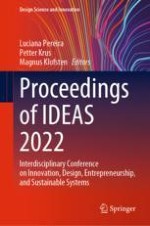This book explores the cutting-edge ideas that are shaping the future of innovation, design, entrepreneurship, and sustainability. The proceedings of the interdisciplinary Conference on Innovation, Design, Entrepreneurship, and Sustainable Systems offer new perspectives on these topics. This book navigates the most recent research trends and practices, and gains unique insights on how to address innovation, design, and entrepreneurship on a sustainable basis. This book is an essential reference for anyone interested in staying up to date on the latest research, whether they are academics, designers, entrepreneurs, or sustainability enthusiasts. Get your copy now and take part in the debate about the future of sustainable innovation.
